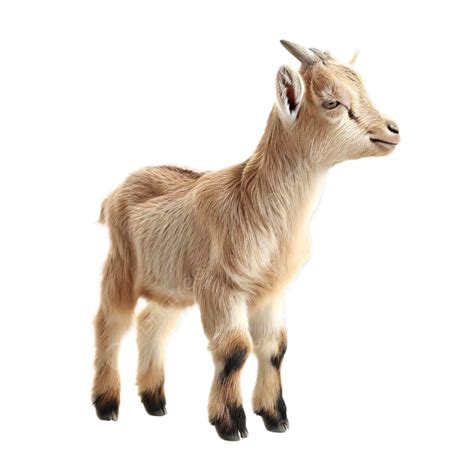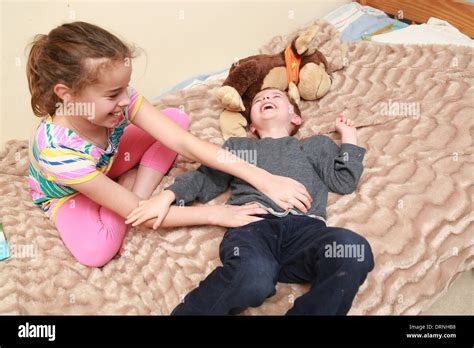
A German Shepherd named Heidi has formed an inseparable bond with a pair of baby goats on a farm in Plympton, Massachusetts, showcasing an unlikely interspecies friendship that has captured hearts online. Heidi’s nurturing behavior towards the kids, Elsa and Anna, mirrors a sibling-like relationship, highlighting her protective and affectionate nature.
PLYMPTON, MA – What started as an unusual pairing has blossomed into an extraordinary display of interspecies camaraderie at a farm in Plympton, Massachusetts. Heidi, a German Shepherd, has taken on the role of a devoted guardian and playmate to two baby goats, named Elsa and Anna, forging a bond that transcends species boundaries. The heartwarming relationship has garnered widespread attention, demonstrating the capacity for animals to form deep, meaningful connections irrespective of their differences.
The origin of this unique friendship traces back to the arrival of Elsa and Anna at the farm. According to farm owner, the introduction was carefully managed, allowing Heidi to gradually acclimate to the presence of the young goats. “Heidi has always been gentle and nurturing,” the owner notes. “We were confident she would accept the goats, but the level of affection she has shown has exceeded all expectations.”
From their initial introduction, Heidi displayed a keen interest in the baby goats, approaching them with cautious curiosity. It wasn’t long before her curiosity transformed into protectiveness, as she began to shadow Elsa and Anna, ensuring their safety and well-being. The goats, in turn, reciprocated Heidi’s affection, nuzzling against her and engaging in playful antics.
The daily routine on the farm now includes a series of heartwarming interactions between Heidi and the goats. Heidi can often be seen gently nudging the goats to guide them, standing guard while they nap, and engaging in spirited games of chase. Their bond is particularly evident during feeding times, where Heidi patiently waits for the goats to finish before enjoying her own meal.
“It’s remarkable to witness how Heidi has embraced the goats as her own,” the owner explains. “She treats them like her own puppies, offering them comfort, protection, and endless affection.”
The viral attention surrounding Heidi and the goats has sparked discussions about interspecies relationships and the emotional intelligence of animals. Experts in animal behavior suggest that Heidi’s nurturing behavior stems from her inherent maternal instincts, which have been redirected towards the vulnerable baby goats. They emphasize that animals are capable of forming complex social bonds and experiencing a wide range of emotions, including empathy and compassion.
Dr. Emily Carter, a veterinary behaviorist, commented on the phenomenon, stating, “Interspecies friendships like this demonstrate that the capacity for social connection and caregiving isn’t limited by species. It reflects a deeper capacity for empathy and social bonding that exists across the animal kingdom.”
The story of Heidi and the goats serves as a reminder of the power of compassion and acceptance. Their unlikely friendship challenges preconceived notions about animal behavior and highlights the potential for animals to form meaningful connections with creatures different from themselves. As the story continues to circulate online, it inspires hope and reminds us of the unifying power of love and friendship.
The bond between Heidi, Elsa, and Anna continues to flourish, enriching the lives of everyone on the farm and captivating the hearts of animal lovers worldwide. Their story is a testament to the extraordinary connections that can be forged when animals are given the opportunity to express their natural instincts and form genuine relationships.
Delving Deeper into the Unlikely Friendship
Beyond the initial heartwarming narrative, several elements contribute to the depth and significance of the bond between Heidi and the goat kids. The breed characteristics of both the German Shepherd and the goats play a significant role in their interactions. Heidi’s inherent herding instincts, combined with her gentle temperament, make her a natural protector and caregiver. Goats, known for their playful and social nature, readily accept Heidi’s affection and guidance.
The farm environment also contributes to the success of this interspecies friendship. The open space and communal living arrangements allow Heidi and the goats to interact freely and develop their bond organically. Without the constraints of confinement or isolation, they are able to express their natural behaviors and form genuine connections.
The Impact of Socialization
Socialization, both early and ongoing, is crucial in shaping an animal’s behavior and ability to form relationships. Heidi’s early socialization experiences likely contributed to her open-mindedness and willingness to accept the goats into her social circle. Exposing animals to diverse environments, individuals, and species during their formative years can broaden their perspectives and foster adaptability.
The goats, too, benefit from socialization. Their interactions with Heidi expose them to different forms of communication and social interaction, enriching their understanding of the world around them. This exposure can enhance their adaptability and resilience, preparing them for future interactions with other animals and humans.
The Science of Animal Bonds
The science behind animal bonds is complex and multifaceted. Neurotransmitters, such as oxytocin and vasopressin, play a key role in promoting social bonding and attachment. These chemicals are released during positive interactions, such as cuddling, grooming, and playing, reinforcing the bond between animals.
Studies have also shown that animals can experience empathy, the ability to understand and share the feelings of others. Empathy is a critical component of social bonding, allowing animals to respond to the needs of their companions and provide support during times of stress or distress.
The Human-Animal Connection
The story of Heidi and the goats highlights the profound connection that can exist between humans and animals. Animals enrich our lives in countless ways, offering companionship, emotional support, and unconditional love. They teach us valuable lessons about compassion, empathy, and the importance of living in harmony with nature.
By observing and learning from animals, we can gain a deeper understanding of ourselves and our place in the world. Animals remind us that we are all interconnected and that our actions have a ripple effect on the environment and the well-being of all living creatures.
Ethical Considerations
While interspecies friendships can be heartwarming and beneficial, it’s important to consider the ethical implications of introducing different species. It’s crucial to ensure that the animals are compatible and that their interactions are safe and respectful. Careful monitoring and supervision are essential to prevent any harm or distress.
It’s also important to recognize that animals have their own unique needs and preferences. Forcing animals into relationships that they don’t desire can be detrimental to their well-being. Respecting animal autonomy and allowing them to make choices about their social interactions is paramount.
The Wider Significance
The story of Heidi and the goats resonates with people because it reminds us of the power of love, acceptance, and compassion. In a world often marked by division and conflict, their unlikely friendship offers a glimmer of hope and inspires us to embrace our differences and build bridges of understanding.
Their story also encourages us to re-evaluate our relationship with the natural world. By recognizing the sentience and emotional intelligence of animals, we can foster a greater sense of respect and responsibility towards all living creatures.
Inspiring Others
The story of Heidi and the goats has inspired countless individuals to consider adopting animals, volunteering at animal shelters, or supporting animal welfare organizations. Their story demonstrates that even small acts of kindness can make a big difference in the lives of animals.
By sharing their story, we can raise awareness about the importance of animal welfare and encourage others to take action. Together, we can create a more compassionate and just world for all animals.
Continuing the Story
The farm owners plan to continue documenting Heidi and the goats’ adventures, sharing updates and photos on social media. They hope that their story will continue to inspire others and promote the importance of animal welfare.
They also plan to use their platform to educate others about responsible pet ownership, animal behavior, and the benefits of interspecies relationships. By sharing their knowledge and experiences, they hope to empower others to create positive change in the lives of animals.
The tale of Heidi and her goat companions continues to unfold, promising more heartwarming moments and valuable lessons about the power of interspecies connection. Their story serves as a reminder that love knows no bounds and that friendship can blossom in the most unexpected places.
The Role of Genetics and Instinct
While environment and socialization play crucial roles, the influence of genetics and instinct cannot be overlooked. German Shepherds, historically bred for herding and protection, possess inherent traits that predispose them to caregiving roles. Their protective instincts, coupled with a generally gentle disposition towards vulnerable creatures, make them well-suited to nurturing young animals.
The goats, descended from social and adaptable species, are naturally inclined to form bonds within a group. Their playful nature and willingness to accept guidance from a dominant figure make them receptive to Heidi’s nurturing presence. The interplay of these genetic predispositions contributes to the seamless integration and enduring connection observed between Heidi and the kids.
Understanding Animal Communication
Much of the communication between Heidi and the goats occurs through non-verbal cues. Body language, vocalizations, and scent all play a role in their interactions. Heidi may use gentle nudges or subtle postural adjustments to guide the goats, while the goats communicate through bleating, nuzzling, and playful gestures.
Understanding these subtle forms of communication is crucial for interpreting animal behavior and ensuring that interspecies interactions are safe and harmonious. By paying close attention to the animals’ cues, caretakers can intervene if necessary and prevent any potential conflicts or misunderstandings.
The Psychological Benefits for Heidi
Beyond the obvious benefits for the goats, the relationship with Elsa and Anna likely provides psychological benefits for Heidi as well. Caring for others can be a source of purpose and fulfillment for animals, providing them with a sense of accomplishment and strengthening their social bonds.
The constant interaction and play with the goats can also help to reduce stress and boredom for Heidi. The goats provide her with mental stimulation and opportunities for physical activity, contributing to her overall well-being.
Expanding the Circle of Compassion
The story of Heidi and the goats serves as a springboard for expanding our circle of compassion to include all living creatures. By recognizing the sentience and emotional intelligence of animals, we can challenge anthropocentric views and cultivate a deeper appreciation for the interconnectedness of life.
This expanded circle of compassion can translate into concrete actions, such as supporting animal welfare organizations, adopting ethical consumer practices, and advocating for policies that protect animal rights.
The Future of Interspecies Relationships
As our understanding of animal behavior deepens, interspecies relationships are likely to become more common and accepted. With careful planning, responsible management, and a deep respect for animal autonomy, we can create environments where animals can thrive and form meaningful connections with individuals from different species.
The story of Heidi and the goats offers a glimpse into the possibilities of a more harmonious future, where animals are valued for their unique qualities and given the opportunity to express their natural instincts.
Challenging Anthropocentrism
The heartwarming tale of Heidi and her goat companions challenges the anthropocentric view that humans are the sole possessors of intelligence, emotions, and the capacity for meaningful relationships. By witnessing the complex social dynamics and genuine affection between these animals, we are compelled to reconsider our place in the animal kingdom and acknowledge the intrinsic worth of all living beings.
Anthropocentrism, the belief that humans are the central or most significant entities in the universe, has historically justified the exploitation and mistreatment of animals. By dismantling this belief system, we can pave the way for a more ethical and sustainable relationship with the natural world.
The Importance of Observation and Learning
The story of Heidi and the goats underscores the importance of careful observation and continuous learning when it comes to understanding animal behavior. By paying close attention to the animals’ interactions, their body language, and their individual personalities, we can gain valuable insights into their needs, their preferences, and their capacity for forming meaningful relationships.
This continuous learning process can help us to become more responsible and compassionate caretakers, ensuring that the animals under our care thrive in environments that are safe, enriching, and conducive to their well-being.
Promoting Responsible Pet Ownership
The success of the interspecies relationship between Heidi and the goats highlights the importance of responsible pet ownership. Before introducing animals from different species, it’s crucial to carefully assess their compatibility, their temperaments, and their individual needs.
Responsible pet owners also provide their animals with proper socialization, training, and enrichment, ensuring that they have the skills and resources they need to navigate their social environment and form healthy relationships.
The Ripple Effect of Kindness
The story of Heidi and the goats has a ripple effect, inspiring acts of kindness and compassion in communities around the world. By sharing their story, we can encourage others to open their hearts to animals in need, to volunteer at animal shelters, and to support organizations that are working to improve the lives of animals.
These small acts of kindness can have a profound impact, creating a more compassionate and just world for all living creatures.
A Symbol of Hope
In a world often characterized by division and conflict, the story of Heidi and the goats serves as a powerful symbol of hope. Their unlikely friendship demonstrates that differences can be overcome, that boundaries can be transcended, and that love and compassion can flourish in the most unexpected places.
Their story reminds us that we are all interconnected and that our actions have a ripple effect on the world around us. By choosing kindness, compassion, and understanding, we can create a more harmonious and peaceful world for all.
FAQ: Heidi and Her Goat Kids
-
How did Heidi, a German Shepherd, form a bond with baby goats? Heidi’s natural herding and nurturing instincts, combined with a gentle temperament, led her to embrace Elsa and Anna as her own. Careful introduction and a supportive farm environment facilitated the bond.
-
What are the benefits of interspecies relationships for animals? Interspecies relationships can provide companionship, emotional support, mental stimulation, and opportunities for physical activity, contributing to overall well-being.
-
What factors contributed to the success of Heidi and the goats’ friendship? Key factors include Heidi’s breed characteristics, the goats’ social nature, the farm environment, early socialization, and the animals’ natural instincts.
-
What can we learn from the story of Heidi and the goats? Their story teaches us about compassion, acceptance, the emotional intelligence of animals, and the importance of challenging anthropocentric views.
-
How can I promote animal welfare in my community? You can support animal welfare by adopting pets from shelters, volunteering at animal organizations, advocating for animal rights, and practicing ethical consumerism.









